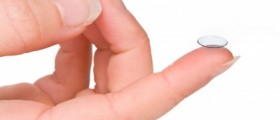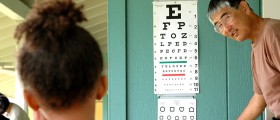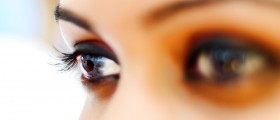
The human eye is highly complex organ made of various different parts which all directly or indirectly contribute to our ability to see things around us. Different eye diseases are blamed for temporarily or sometimes irreversible changes in one's vision. While certain conditions can be treated conservatively, others require surgical approach. However, sometimes with the best possible treatment and care patients may lose their sight and become legally blind.
Eye Disease in Humans
The eye is divided into several portions and these further contain different parts. The front portion of the organ comprises the iris, cornea, pupil, sclera and conjunctiva. The lens of the eye is located right behind the iris and the pupil. The inside of the back portion of the eye is practically all filled with the vitreous, a gel-like structure that maintains the shape of the eye. At the back of the eye the inside lining of the organ is made of specific light-sensation cells which all together make the retina. This is practically the part of the eye that generates electrical impulses from the obtained light. These impulses are sent via the optic nerve to specific parts of the brain for further processing.
A person may develop a whole variety of eye conditions. While some can be inherited or are associated with certain gene abnormalities or might develop congenitally, others are acquired and occur once the person is born. Infections, inflammation associated with autoimmune diseases, injuries, tumors etc. are all blamed for damage to certain eye structures.
Infections caused by various agents (bacteria, viruses, fungi and parasites) usually affect the conjunctiva, cornea or uvea. Also, being superficial parts of the eye, the conjunctiva and cornea are additionally susceptible to injuries.
Furthermore, since the eye represents a powerful optic system, it is clear that refraction of light entering the eye may somehow change in case certain parts of the refractive system change their appearance i.e. undergo certain anatomical abnormalities. This is the reason why some people suffer from refractive anomalies such as myopia, hyperopia and astigmatism.
If the eyes are not aligned properly one is said to suffer from strabismus. Strabismus is a condition per se but it is also the most common cause of ambyopia, another eye disorder also known under the name lazy eye.
The retina is rarely inflamed but it is frequently affects by other conditions such as retinopathy of different origin (diabetic, hypersensitive or retinopathy associated with sickle cell disease). Older people are also prone to age-related macular degeneration.
Apart from the mentioned cataract and glaucoma are two more eye condition that affect waste majority of people all around the world. While cataract affects the lens of the eye, leading to its clouding and blurry vision, glaucoma is associated with an increase in intraocular pressure and subsequent damage to the optic nerve.
And finally, even though eyelids are nor the very part of the eyeball but they represent accessory organs their conditions are also considered as eye conditions. These include pterygium, stye, chalazion and inflammation of the eyelids medically known as blepharitis.
Effect of Lenses on Eye Disease
Contact lenses are definitely astonishing devices which represent successful replacement for eyeglasses and are used in certain number of eye conditions. Apart from being used for medical purposes contact lenses additionally provide with aesthetic satisfaction since most people who wear glasses find these unappealing or even ugly. They come in different color, therefore, may easily changes one's color of the eyes.
Now, when it comes to eye conditions contact lenses are a suitable solution to nearsightedness, farsightedness and astigmatism. Furthermore, they are indicated for individuals suffering from keratoconus, the condition characterized by abnormal curvature of the cornea. Also, these aids are prescribed after refractive surgery in case there is a need for some under- or over-corrections.
There are different types of contact lenses. Some are rigid, others soft and there is also the combination of the two. Contact lenses may be worn only during the day or they are meant for extended use (e.g. should be additionally worn over night). They are prescribed by a well-experienced ophthalmologist, optometrist and sometimes optician. These professionals should fully inform their patients about the correct use of contact lenses. All patients are taught how to clean and maintain impeccable hygiene of these aids and when they are supposed to replace old contacts with the new ones. Any problems regarding the use of contacts should be reported without hesitation.
So, apart from being highly helpful contact lenses may per se be culprits of certain eye conditions. For instance, they might precipitate eye irritation, redness or blurred vision. Reactions like these must be immediately reported and contacts discontinued until the affected eye properly heals. Otherwise, the irritation of the superficial layers may progress into a corneal abrasion (a scratch), a rather complex condition which requires more aggressive treatment approach.
And finally, unhygienic use of contact lenses contributes to eye infections. This is why prior to placing these visual aids one should thoroughly wash his/her hands, clean the lenses with the specific solution and only then put the contacts in.

















Your thoughts on this
Loading...